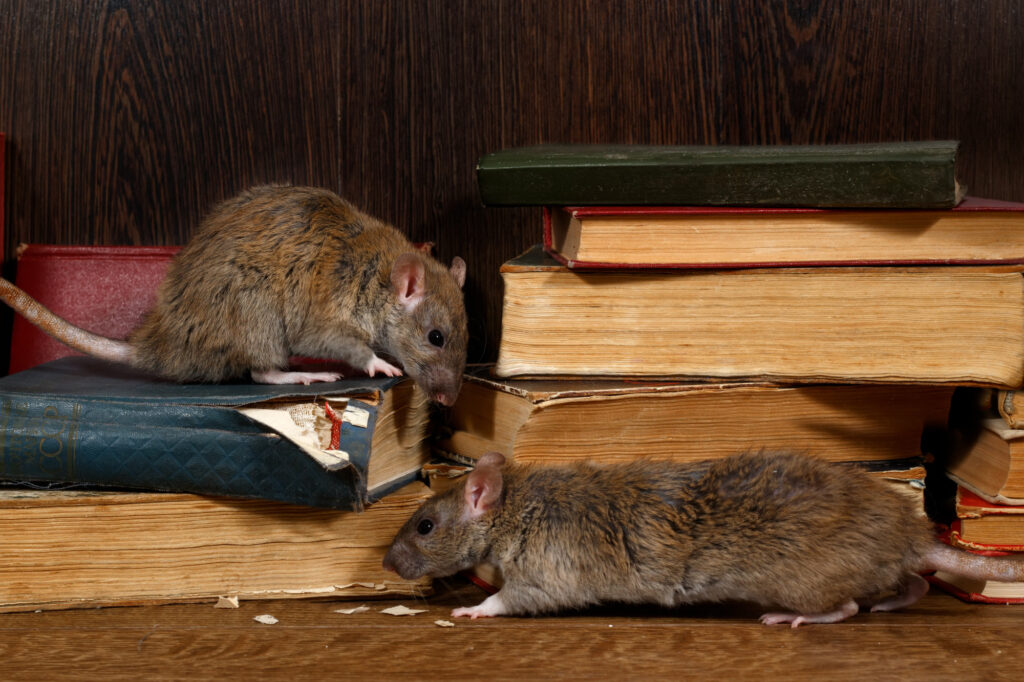Signs of Rodent Activity: What to Check Before Thanksgiving
The holidays are a time for family, food, and celebration—but for rodents, it’s a time for nesting, scavenging, and moving indoors. As temperatures drop and food becomes scarce outside, mice and rats start seeking warmth and easy meals—often inside your home.
If you’re hosting guests or cooking for Thanksgiving, the last thing you want to discover is a rodent problem in your kitchen, attic, or basement. Spotting the early signs of rodent activity before the holidays can save you from contamination, property damage, and a serious pest infestation.
This comprehensive guide explains what to look for, where to inspect, and how to act fast if you notice anything suspicious—so you can enjoy a clean, comfortable, and pest-free Thanksgiving.
Why Rodents Move Indoors in Late Fall
When November rolls around, dropping temperatures and dwindling outdoor food sources push rodents indoors. They’re looking for:
- Warmth to escape the cold.
- Food scraps or stored pantry items.
- Shelter for nesting during the winter months.
Your home offers all three. That’s why this time of year—especially before Thanksgiving—is critical for proactive pest inspection and holiday pest prevention.
Even small signs of rodent activity should be taken seriously. A few droppings or gnaw marks can mean there are more hidden nearby. Rodents reproduce quickly, and infestations can escalate within weeks if left unchecked.
Common Signs of Rodent Activity
Rodents are nocturnal, meaning they’re most active at night. You might not see them directly, but they leave behind telltale evidence. During your pre-holiday home inspection, look for the following signs in key areas like the kitchen, basement, attic, and garage.
1. 🐾 Droppings
Rodent droppings are one of the clearest indicators of an infestation.
- Mice droppings: Small (1/8–¼ inch), black, and pointed at both ends.
- Rat droppings: Larger (½–¾ inch), with blunt ends.
You’ll often find droppings along walls, in corners, under sinks, or near food sources. Fresh droppings are dark and moist, while older ones are dry and gray.
Pro Tip: Use gloves and a disinfectant spray when cleaning droppings—rodents can carry diseases such as hantavirus and salmonella.
2. 🐭 Gnaw Marks
Rodents constantly gnaw to keep their teeth from overgrowing. Look for:
- Chew marks on food packaging, wooden beams, or electrical wiring.
- Damaged baseboards, insulation, or furniture legs.
- Bite marks around entry points like vents or crawl space openings.
Fresh gnaw marks appear light in color; older ones darken over time. If you notice both, it may mean you have an ongoing infestation.
3. 🦶 Tracks and Grease Marks
Mice and rats tend to use the same paths repeatedly, leaving behind greasy rub marks or footprints along their routes.
- Check for smudge trails on walls or baseboards.
- Sprinkle a thin layer of flour or baby powder in suspected areas overnight—footprints can confirm activity.
- Pay attention to dusty surfaces, especially in basements or attics.
These tracks often lead straight to hidden nesting or feeding spots.
4. 🪶 Nesting Materials
Rodents build nests using soft materials such as:
- Shredded paper, insulation, or fabric
- Leaves, grass, or stuffing from furniture
- Cardboard or plastic from storage boxes
Check attics, crawl spaces, behind appliances, and inside wall voids for nesting materials. Mice prefer warm, hidden spaces close to food sources, while rats typically nest in basements or outdoor burrows near foundations.
5. 👃 Unpleasant Odors
A strong, musky, ammonia-like odor often indicates rodent urine. The smell intensifies in enclosed areas like pantries, crawl spaces, or attics.
- Persistent odors may also attract more rodents.
- Dead rodents or droppings can cause lingering smells, signaling active infestations.
If you can’t find the source, use a black light—rodent urine glows under UV light, helping you pinpoint problem areas.
6. 🔊 Scratching or Scurrying Sounds
Hearing noises at night? That’s a classic warning sign.
- Scratching in walls or ceilings: Indicates rodents moving through insulation or between floors.
- Scurrying in the attic: Rodents are often active above ceiling joists at night.
- Rustling in the kitchen or pantry: They’re foraging for crumbs or pet food.
The noises often increase during quiet evening hours, when rodents feel safest moving around.
7. 🕳 Visible Entry Points
Inspect your home’s exterior for openings where rodents may enter:
- Gaps around pipes, vents, and utility lines.
- Cracks in the foundation or siding.
- Openings around doors, garage seals, and window frames.
Even tiny openings can allow entry—mice can squeeze through holes as small as ¼ inch. Seal gaps immediately with steel wool, caulk, or metal flashing.
Key Areas to Inspect Before Thanksgiving
Rodents don’t limit themselves to one room—they move between food sources, water, and nesting sites. Focus your pre-holiday inspection on these high-risk zones:
🍽 Kitchen and Pantry
- Look behind appliances like stoves, refrigerators, and dishwashers.
- Inspect under sinks and around plumbing for moisture or droppings.
- Check food packaging and pet food containers for gnaw marks.
- Clean crumbs, grease, and spills that attract pests.
Pro Tip: Store all dry goods—like grains, nuts, and cereals—in airtight, rodent-proof containers.
🏠 Attic
- Look for chewed insulation or droppings along joists.
- Inspect around vents, chimneys, and roof edges for gaps.
- Remove old boxes or clutter that could provide nesting material.
Attics often serve as long-term nesting areas since they’re quiet, warm, and rarely disturbed.
🧱 Basement and Crawl Space
- Check for cracks or holes along the foundation.
- Inspect insulation, vapor barriers, and sump pump areas for gnawing or droppings.
- Seal entry points around utility lines or HVAC ducts.
- Use a dehumidifier—rodents prefer damp environments.
If you notice moisture problems, consider installing French drains or a sump pump to prevent flooding that attracts pests.
🚗 Garage and Storage Areas
Rodents often enter through garage doors and set up nests in storage boxes or near water heaters.
- Replace worn garage door seals.
- Keep clutter off the floor.
- Avoid storing pet food, birdseed, or paper products in the garage.
A well-organized garage is less inviting to pests and easier to inspect regularly.
Holiday Pest Prevention Tips
Thanksgiving is one of the busiest cooking times of the year, which also means an abundance of smells, warmth, and food—everything rodents love. Here’s how to keep them out:
🧼 1. Deep Clean Your Kitchen
- Wipe down counters and cabinets regularly.
- Sweep and mop floors to remove crumbs.
- Empty trash frequently and use bins with tight-fitting lids.
🚪 2. Seal Entry Points Early
- Use steel wool and caulk to close gaps around pipes, vents, and utility openings.
- Install door sweeps on exterior and garage doors.
- Check attic vents and soffits for openings.
💡 3. Keep Storage Organized
- Use plastic bins instead of cardboard boxes.
- Avoid storing fabric or paper goods in unsealed containers.
- Keep stored items at least 12 inches off the ground.
🧊 4. Control Moisture
- Repair leaky pipes and faucets.
- Ensure gutters and downspouts direct water away from the foundation.
- Use a dehumidifier in damp areas like basements and crawl spaces.
🧹 5. Maintain the Outdoors
- Trim vegetation away from the foundation.
- Rake leaves and debris that can conceal entry points.
- Store firewood at least 20 feet from your home.
🧰 6. Schedule a Professional Pest Inspection
If you’ve noticed any signs of rodent activity, schedule an inspection before the holidays. Pest control professionals can identify:
- Hidden nesting areas.
- Entry points you may have missed.
- Damage to insulation, wiring, or foundation materials.
They’ll also apply professional-grade exclusion materials and traps if needed—ensuring your home is rodent-free for Thanksgiving and beyond.
Why Acting Early Matters
Ignoring small signs of rodent activity can lead to:
- Health hazards: Rodents carry bacteria and allergens that can contaminate food.
- Electrical fires: Chewed wires are a serious risk.
- Structural damage: Gnawing weakens insulation, wood, and foundation materials.
By catching these issues before they escalate, you save yourself stress, money, and the unpleasant surprise of finding droppings near your holiday dinner table.
Final Thoughts: A Clean, Safe, and Pest-Free Thanksgiving
Thanksgiving should be about family and gratitude—not worrying about pests. By performing a thorough inspection for signs of rodent activity, sealing entry points, and maintaining cleanliness, you can ensure your home stays cozy and pest-free all season long.
✅ Check kitchens, basements, and attics for droppings and odors.
✅ Seal cracks and gaps before temperatures drop.
✅ Keep food sealed, floors clean, and clutter minimal.
✅ Call a professional if you spot serious signs of infestation.
Stay proactive now, and you’ll enjoy peace of mind all winter—knowing your only guests this Thanksgiving are the ones you invited.
📞 Need help preparing your home for the holidays? Schedule a pest inspection today to ensure your property is clean, sealed, and ready for the season.

